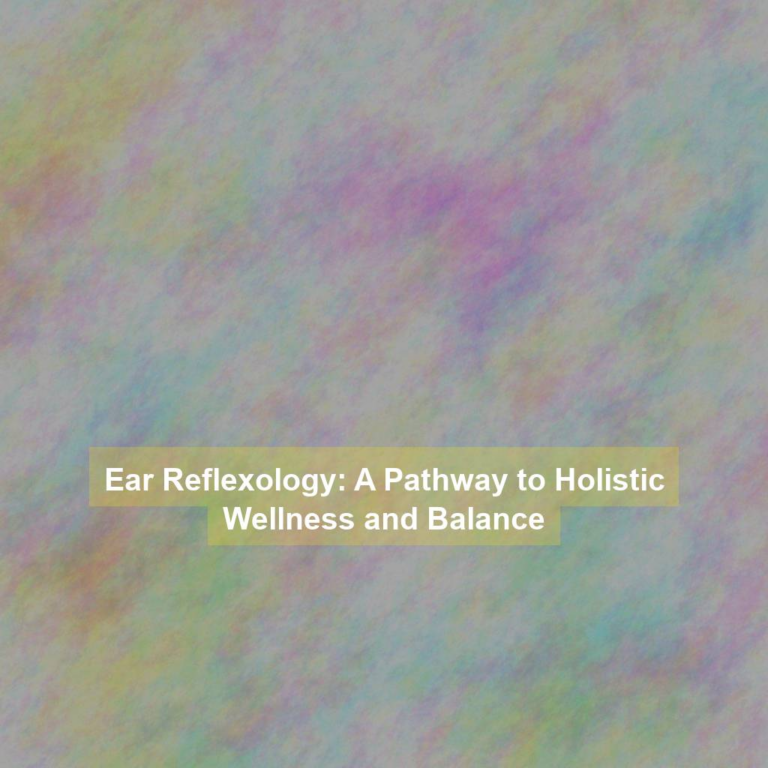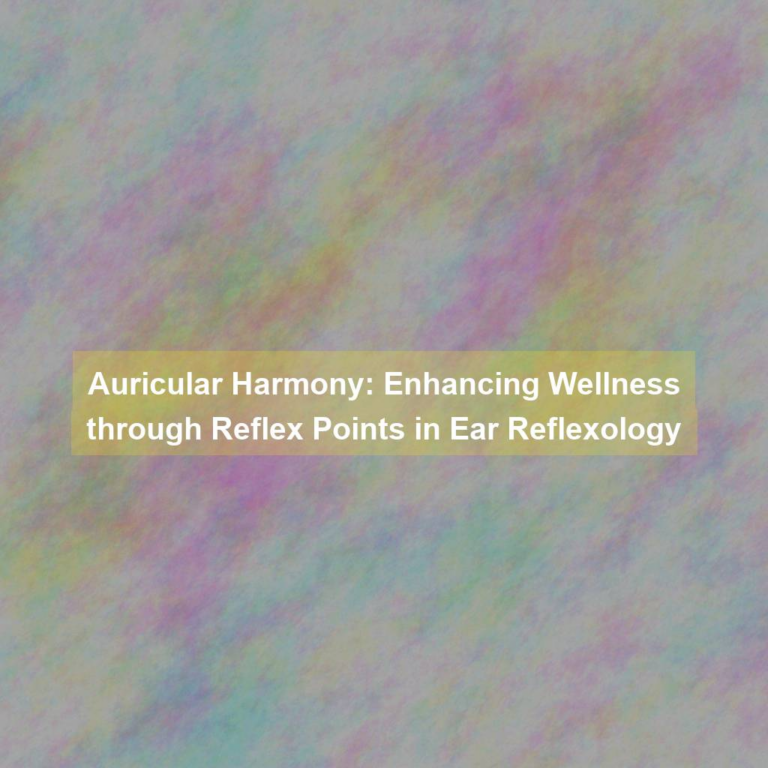When it comes to your overall wellness, think of your body as a complex, interconnected system, much like a well-oiled machine. Now, imagine a practice that focuses on stimulating specific points on your ears to promote balance and harmony throughout your entire being.
Ear reflexology, a lesser-known but highly effective ancient healing technique, offers a multitude of benefits that may surprise you. From stress relief to improved circulation, the potential advantages of incorporating ear reflexology into your wellness routine are worth exploring further.
Understanding Ear Reflexology
Understanding ear reflexology can greatly enhance your awareness of the interconnectedness between specific points on your ears and various organs and systems in your body. By stimulating these specific points, you can potentially promote overall well-being and address specific health concerns. The outer ear is believed to contain reflex points that correspond to different parts of the body, and applying pressure or massaging these points is thought to have a therapeutic effect.
The concept behind ear reflexology is similar to that of foot reflexology, where specific points on the feet are believed to correspond to different organs and systems. By understanding the principles of ear reflexology, you can learn to identify and target these points to potentially alleviate discomfort or support the healthy functioning of specific areas in your body.
Practitioners of ear reflexology suggest that the practice can help improve circulation, relieve tension, and enhance relaxation. Additionally, some proponents believe that ear reflexology may aid in managing stress, promoting better sleep, and supporting overall vitality. Embracing the concept of ear reflexology can introduce you to a holistic approach to well-being that focuses on the interconnectedness of the body’s systems and the potential benefits of targeted stimulation.
The Science Behind Ear Reflexology
By recognizing the interconnectedness between specific points on your ears and various organs and systems in your body, you can appreciate the scientific basis behind the therapeutic effects of ear reflexology. The concept is rooted in the understanding that the ear contains numerous nerve endings and acupuncture points that correspond to different parts of the body. When these points are stimulated, they can influence the functioning of the related organs and systems through the nervous system and energy pathways.
Research has shown that ear reflexology can trigger the release of endorphins, which are natural painkillers, and stimulate the parasympathetic nervous system, promoting relaxation and reducing stress. Additionally, studies have demonstrated that ear stimulation can affect brain activity, leading to changes in the perception of pain and overall well-being. Furthermore, the practice of ear reflexology has been associated with improved circulation and enhanced immune function.
Moreover, modern imaging techniques, such as functional magnetic resonance imaging (fMRI), have provided scientific evidence of the brain’s response to ear stimulation, supporting the physiological basis of ear reflexology. This scientific understanding adds credibility to the ancient practice and encourages further exploration of its therapeutic potential.
Benefits of Ear Reflexology
Ear reflexology offers a range of benefits, including promoting relaxation, reducing stress, and improving overall well-being through the stimulation of specific points on the ear. By stimulating these points, ear reflexology can help to release endorphins, which are natural painkillers in the body, leading to a sense of relaxation and overall well-being. This can be particularly beneficial for individuals experiencing high levels of stress or anxiety.
Furthermore, ear reflexology may also help to improve sleep quality, as it can aid in calming the mind and body, promoting a more restful sleep. Additionally, the practice is believed to enhance circulation and the body’s natural ability to heal itself.
Techniques and Tools for Ear Reflexology
Explore the various techniques and tools utilized in ear reflexology to effectively stimulate specific points on the ear for promoting relaxation and overall well-being. One common technique is the use of gentle massage or acupressure on the ear. This involves applying light pressure to the ear’s reflex points using the fingers or specialized reflexology tools. Another technique is ear reflexology mapping, which involves identifying the various reflex points on the ear that correspond to specific organs and body parts. By stimulating these points, practitioners believe they can promote overall wellness.
In addition to hands-on techniques, ear seeds or ear pellets are often used in ear reflexology. These are small seeds or pellets that are placed on specific points on the ear and secured with adhesive tape. The gentle pressure from the seeds or pellets on these points is believed to provide continuous stimulation, even after the reflexology session has ended. A small ear probe or reflexology wand may also be used to apply precise pressure to the ear reflex points, providing a more targeted approach to ear reflexology.
When practicing ear reflexology, it’s important to use gentle and precise techniques to avoid discomfort or injury. Whether using hands-on methods or specialized tools, the goal is to effectively stimulate the reflex points on the ear and promote relaxation and well-being.
Incorporating Ear Reflexology Into Your Wellness Routine
Consider incorporating ear reflexology into your wellness routine to experience potential benefits such as relaxation and overall well-being. To begin, set aside dedicated time in your daily or weekly schedule for ear reflexology. This could be as simple as taking a few minutes each day to massage your ears or incorporating it into your existing self-care rituals, such as during your morning or evening skincare routine. By making it a regular part of your routine, you can maximize the benefits and create a sense of consistency in your wellness practices.
Additionally, you can enhance your ear reflexology experience by creating a soothing environment. Find a quiet and comfortable space where you can relax and focus on the practice without distractions. Consider playing calming music, lighting a scented candle, or practicing deep breathing exercises to further enhance the relaxation effects of ear reflexology.
Moreover, you can explore combining ear reflexology with other wellness activities such as meditation, yoga, or aromatherapy. By integrating ear reflexology into your existing wellness routine, you can create a holistic and comprehensive approach to nurturing your overall well-being. Remember, consistency is key, so find a routine that works for you and stick to it to fully reap the potential benefits of ear reflexology.
Conclusion
So, next time you’re looking for a way to improve your overall wellness, don’t forget to listen to your body ‘ including your ears!
Ear reflexology offers a range of benefits, from stress relief to improved circulation, and can easily be incorporated into your daily routine.
With a little bit of knowledge and the right tools, you can start reaping the benefits of ear reflexology today.
Your body will thank you for it!







